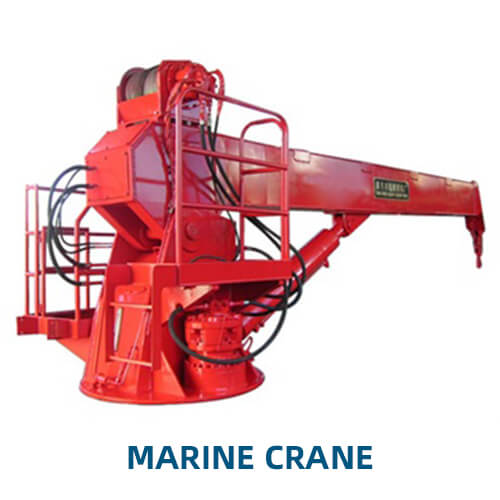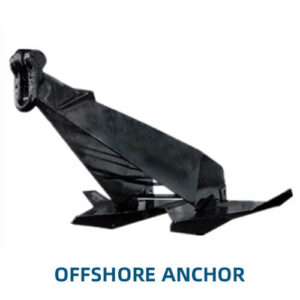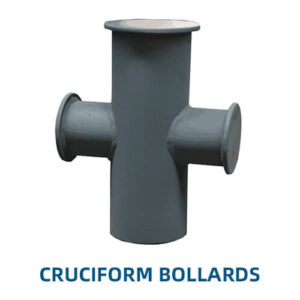Key Features of Marine Cranes:
- Robust Construction:
- Materials: Marine cranes are constructed from high-strength, corrosion-resistant materials such as stainless steel and coated steel to withstand the harsh marine environment. They are designed to handle the stresses of saltwater, high humidity, and mechanical wear.
- Design: The crane’s structure is reinforced to handle heavy loads and resist the forces encountered at sea, including the dynamic loads from ship movement and sea conditions.
- Versatile Operation:
- Load Capacity: Marine cranes are available in various sizes and load capacities to suit different types of vessels and offshore structures. They are designed to handle everything from small cargo loads to very large and heavy equipment.
- Reach and Height: Marine cranes are designed with a range of reach and lifting height capabilities to accommodate different types of operations, whether it’s reaching over the side of a ship or lifting equipment from the water.
- Stabilization:
- Outriggers: Many marine cranes are equipped with outriggers or stabilizing legs to provide additional stability when lifting heavy loads. These outriggers extend out from the base of the crane to distribute the weight and reduce the risk of tipping.
- Dynamic Positioning: Some marine cranes are integrated with dynamic positioning systems to maintain the crane’s position and stability during operations, especially in rough seas or when handling heavy loads.
- Hydraulic Systems:
- Hydraulic Actuation: Marine cranes often use hydraulic systems to power the lifting and maneuvering operations. Hydraulic systems provide smooth, precise control and are capable of handling heavy loads.
- Control Systems: The hydraulic systems are operated through control panels or remote controls, allowing operators to manage the crane’s functions with precision.
- Safety Features:
- Load Monitoring: Marine cranes are equipped with load monitoring systems to ensure that they do not exceed their maximum load capacity, reducing the risk of accidents and equipment failure.
- Emergency Systems: Safety features such as emergency stop buttons, alarms, and fail-safe mechanisms are integrated to protect operators and equipment during unexpected situations.
Types of Marine Cranes:
- Deck Cranes:
- Application: Mounted on the deck of ships and offshore platforms, deck cranes are used for loading and unloading cargo, equipment, and supplies.
- Design: Typically features a boom that extends over the side of the vessel and a winch or hoist system to handle various loads.
- Marine Mobile Cranes:
- Application: Mounted on barges or floating platforms, marine mobile cranes are used for a wide range of tasks, including lifting heavy equipment, performing construction work, and supporting offshore operations.
- Design: Mobile cranes are designed to be versatile and can move to different locations on the barge or platform as needed.
- Harbor Cranes:
- Application: Located at ports and harbors, these cranes are used for loading and unloading cargo from ships. They are often large, with high capacity and reach to handle containerized cargo and bulk materials.
- Design: Harbor cranes may include gantry cranes and container cranes, designed to efficiently handle cargo operations in busy port environments.
- Offshore Cranes:
- Application: Used on offshore oil rigs, floating production units, and other offshore structures. These cranes handle equipment, supplies, and personnel in the challenging conditions of offshore environments.
- Design: Offshore cranes are built to withstand harsh weather conditions and provide high reliability for critical operations.
- Knuckle Boom Cranes:
- Application: These cranes have a unique boom design that allows for greater flexibility and maneuverability. They are often used for specialized tasks, such as handling equipment and materials in confined spaces.
- Design: The knuckle boom allows the crane to fold and extend in various configurations, providing versatility for different lifting needs.
Advantages of Marine Cranes:
- Durability: Built to withstand the harsh marine environment, marine cranes are designed for long-term use and reliability in challenging conditions.
- Precision: Equipped with advanced control systems, marine cranes provide precise handling of loads, improving efficiency and safety.
- Versatility: Available in various types and sizes, marine cranes can be tailored to meet the specific needs of different vessels and offshore platforms.
Considerations for Using Marine Cranes:
- Load Capacity: Ensure the crane’s load capacity matches the requirements of the tasks it will perform. Overloading can lead to accidents and equipment damage.
- Maintenance: Regular maintenance is crucial to keep marine cranes in good working condition. This includes checking hydraulic systems, control mechanisms, and safety features.
- Safety: Adhere to safety guidelines and operational procedures to prevent accidents and ensure the safe use of the crane. Proper training for operators is essential.
Marine cranes are vital for the efficient and safe operation of maritime and offshore activities. Their robust design, versatility, and advanced features make them essential tools for handling heavy loads in challenging environments.






